Eisai Adopts Metal Scavenger Solution for Enhanced Manufacturing
In this interview Mr. Akutagawa, Executive Director and Mr. Oi, Ph.D., Senior Manager of the Kashima Manufacturing and Quality Technology Department at Eisai, share their experiences with the testing and integration of metal scavengers into their active pharmaceutical ingredient (API) manufacturing process.

Can you tell us about Eisai's Kashima Manufacturing and Quality Technology Department?
Mr. Akutagawa: The Kashima Plant is involved in the production of active pharmaceutical ingredients (APIs) used to combat a diverse spectrum of diseases. The site has a central role in our research and manufacturing activities for delivering APIs globally.
Our department is tasked with an array of responsibilities, including collaborative efforts with the R&D division to develop novel chemical entities. We also address quality and cost-related challenges in the manufacturing of our commercial drug substances, manage equipment maintenance and engineering, and are involved in planning of our next-generation smart factories.
Mr. Oi: My primary role involves troubleshooting the transition from batch-based procedures obtained during process development to full-scale manufacturing. I also investigate root causes of issues that may arise during commercial manufacturing and implement corrective actions. Our process research focuses on optimizing synthesis processes for the scale-up and manufacturing of new chemical entities.
We also strive to enhance quality and reduce costs through collaborative endeavors with the R&D department, including the development of solutions for commercial production, such as continuous manufacturing. The importance of these activities has increased as the industry has evolved and changed.
You've embarked on a journey to explore the use of metal scavengers in your production. Can you elaborate on this?
Mr. Oi: Our interest in metal scavengers was piqued when we came across a presentation on flow chemistry in API manufacturing at a symposium. Additionally, we found a user interview highlighting ISOLUTE® Si-Thiol metal scavenger on Biotage's website.
Initially, we thought it would be difficult to incorporate metal scavengers into commercial manufacturing due to the challenges associated with modifying already approved manufacturing protocols, considering regulatory requirements like cGMP. However, as I was involved in a project focused on a new chemical entity, I took on the challenge of developing a new methodology.
In this project, our primary goal was to reduce palladium (Pd) residues in the API to below the allowable limit when
establishing the manufacturing process for the candidate molecule. After numerous studies, we discovered that scavengers could efficiently remove Pd, which greatly motivated us to advance our research.
Continue reading this customer case below:

